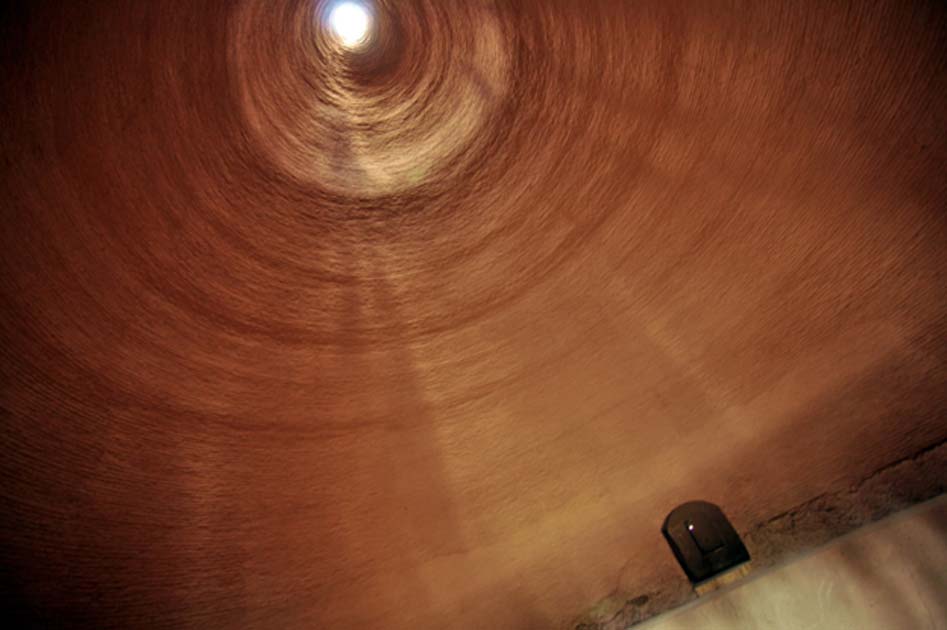Ancient Advanced Technology: 2,400-Year-Old Yakhchals Kept Ice in the Desert
The ancients were cleverer than some people today assume. They didn’t have rockets or electricity, at least no indisputable proof has been found of such technologies, but they did come up with technology that we don’t usually associate with the ancient world. The yakhchal (meaning ice pit) was a type of ancient refrigerator built in the deserts of Persia (now Iran), which was made without electricity, modern coolants, or most elements of modern refrigerators. It demonstrates the ability of humans to find solutions to problems with any materials or technology they have available.
How Does a Yakhchal Work?
This approach to making refrigerators was mastered by Persian engineers around 400 BC, though it is possible that people were making them before that. Yakhchals are fairly simple to make so that even those who were relatively poor could afford them. Most yakhchals were domed structures with an underground square-shaped containment area.

A yakhchal in Iran. (CC BY SA 2.0)
After the containment area was dug and the dome was erected, a type of mortar made from clay, sand, ash, goat hair, and lime called sarooj was used to make it waterproof. The collection area for the water needed to be deep enough to keep cool and the material out of which the yakhchal was made needed to be enough of an insulator to keep out heat.
- Epistemology of Ancient Lost Technology
- Common Tools or Ancient Advanced Technology? How Did the Egyptians Bore Through Granite?
Water was brought to the yakhchal either by directly transporting ice from nearby mountains or diverting water from an aqueduct into the yakhchal using underground water channels called qanats.

Inside the ice house construction called a yakhchal, in Kashan, Iran. (Fotokon /Adobe Stock)
Adjacent to some yakhchals, an east-west oriented wall would be built on the south side of the refrigerator and water would be brought into the yakhchal from the north side of the wall. The reason for this was to keep the water cool during the middle of the day as it entered the yakhchal.
Another device used to keep the yakhchal cool is a badgir, a type of wind-catching mechanism which would catch the breeze and divert it down into the yakhchal. As the air descended, it would be cooled by the ice as well as the cool air accompanying the water in the qanat. Alternatively, the badgir could be used to cause warm air to rise and cool air to replace it. This mechanism is still used in many desert towns in modern Iran.

A diagram showing how the yakhchal kept the inside refrigerated. (heritageinstitute.com)
Once in the yakhchal, the water would freeze overnight. This process could be expedited through having ice, transported from the mountains, already present in the yakhchal to act as a seed. Once the water was frozen, it would be cut up into blocks so that the water could be easily transported out of the yakhchal for drinking and other purposes. In addition to storing drinking water, the yakhchal was also used to keep food such as fruit, dairy products, and probably meat cool so that it would last longer.
Many Yakhchals in Iran, Afghanistan, and other parts of west and central Asia are still standing even after thousands of years. They represent the remnants of ancient Persia and are a part of the cultural heritage of Iran.

A yakhchal in the Dasht-e-Kavir desert, Iran. (CC BY SA 2.0)
Legacy of the Ancient Ice Houses
In addition to being historically interesting, yakhchals have also been suggested as an inexpensive and sustainable way for modern Iranians and other central Asian communities to have refrigeration without requiring the use of electricity. Theoretically, the process used to make yakhchals could also be replicated and used in other regions with climates similar to desert areas in Iran and central Asia, such as the American Southwest or parts of northwestern China. In this way, the revival of an ancient technology could help modern people around the world live more sustainably and still have modern conveniences, specifically refrigeration.
- New Revelations When 3,000-Year-Old Prosthetic Toe is Examined with Cutting Edge Technology
- High-Technology Discovered in Classical Mythology Reveals The Ancient Origins of Artificial Intelligence
Modern westerners tend to assume that conveniences like refrigeration require advanced technologies such as electricity and the ability to produce powerful coolant chemicals, but it turns out that refrigeration can be produced using surprisingly simple methods.
Top image: Looking up inside a Yakhchal. Source: Bruno Vanbesien
By Caleb Strom
Updated on September 30, 2021.
References
Mahdavinejad, M., and Kavan Javanrudi. "Assessment of ancient fridges: A sustainable method to
storage ice in hot-arid climates." Asian Culture and History 4.2 (2012): 133.
“In ancient Persia, engineers mastered a sustainable technology to store ice throughout the scorching summer” by Aleksandra Andonovska (2016). Vintage News. Available at: https://www.thevintagenews.com/2016/09/30/unique-oxus-treasure-important-surviving-collection-achaemenid-persian-metalwork-2/
“The programmable robot of ancient Greece” by Noel Sharkey (2007). New Scientist Magazine. Available at: https://www.newscientist.com/article/mg19526111-600-the-programmable-robot-of-ancient-greece/

















